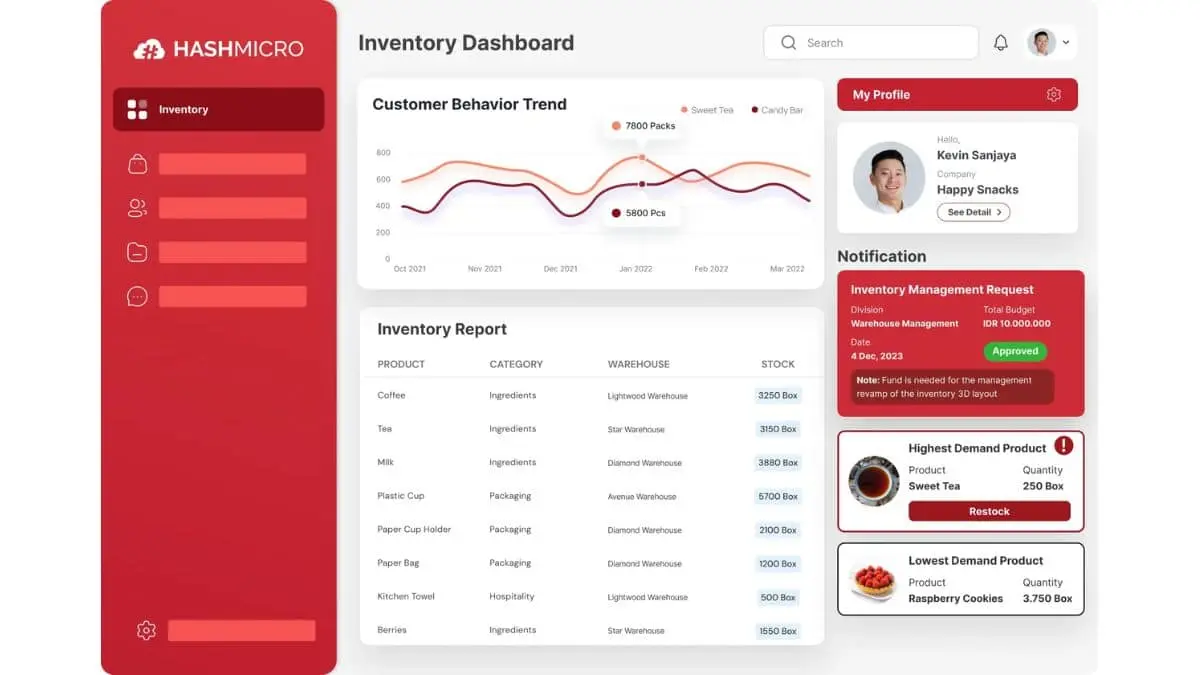Facing challenges in keeping your business profitable while managing inventory here in the Philippines? The way you value your inventory could be the hidden factor affecting your success.
Inventory valuation goes beyond mere figures—it plays a crucial role in shaping your financial health, from influencing the cost of goods sold to impacting your overall profitability. Overlooking this key aspect can lead to financial missteps and hinder business growth, especially in the competitive Filipino market.
Imagine confidently choosing the right valuation method that aligns with your business goals and boosts profitability. Whether it’s FIFO, LIFO, or another approach, understanding these methods can set you up for success. But have you ever wondered how a small change in your inventory strategy could quietly drive better business outcomes? Let’s explore.
Key Takeaways
|
Table of Contents

What is Inventory Valuation?
The objective of inventory valuation goes beyond merely calculating asset value. It provides a realistic view of your financial position, which supports better strategic business decisions.
In the Philippine business landscape, accurate valuation is vital for meeting tax obligations, maintaining compliance, and presenting reliable data to potential investors. Moreover, it directly impacts financial ratios and metrics that lenders and stakeholders assess when evaluating your company’s performance.
Why is Inventory Valuation Important?

Inventory valuation directly affects financial metrics like COGS, which influences your gross profit and net income. Since COGS covers direct costs of goods, inventory valuation heavily impacts financial results.
Overvaluation lowers COGS, increasing profits but raising tax liability, while undervaluation inflates the cost of goods sale, reducing taxable income but distorting financial accuracy.
Not doing proper inventory valuation can bring serious risks. It can lead to misleading financial statements, affect taxes, and make decision-making harder. Inaccurate valuation also makes it tough to get financing since lenders rely on this data. Over time, neglecting this process can weaken investor trust and threaten your business’s stability.
Choosing the Right Inventory Valuation Method
Deciding on the right inventory valuation method is crucial for shaping financial reporting and tax outcomes. The method depends on your business model, inventory type, and financial goals.
Whether your priority is tax efficiency, precise cost tracking, or simple reporting, each method offers distinct advantages. Selecting the right approach ensures your valuation aligns with your business needs.
Here are some common inventory valuation methods to consider:
- FIFO (First In, First Out): The FIFO method assumes the first items purchased are sold first, making it ideal for perishable or time-sensitive products. It generally leads to lower COGS in rising price environments, increasing profits but also tax liability. FIFO clearly reflects current inventory value since unsold goods are valued closer to recent costs.
- LIFO (Last In, First Out): LIFO assumes that the most recently purchased inventory is sold first, suiting businesses facing rising costs. It aligns higher costs with current revenues, reducing taxable income during inflation. However, LIFO isn’t always allowed globally and can lead to older inventory being undervalued on your balance sheet.
- Weighted Average Cost (WAC): The WAC method calculates an average cost for all inventory items, distributing the total cost evenly across units. It’s ideal for businesses with large volumes of similar items, like in manufacturing or wholesale. While simple and consistent, WAC may lack precision in markets with significant price fluctuations.
- Specific Identification: The Specific Identification method tracks the cost of each individual inventory item, offering unmatched accuracy but added complexity. It’s commonly used for high-value or unique items like luxury goods, vehicles, or custom products. While precise, it demands detailed tracking systems, making it less practical for businesses with high inventory turnover ratios.
Understanding how each method aligns with your business goals will help you make the best choice. Consulting with an accountant or financial advisor can offer further clarity on which method is most beneficial for your unique situation.
Challenges of Inventory Valuation
Inventory valuation can present several challenges, particularly for businesses with diverse or large inventories. One common difficulty is keeping accurate records of inventory purchases and sales, especially if your inventory turnover is high.
Missteps in tracking inventory, and thus messing up inventory control as a whole, can lead to discrepancies in your financial statements, potentially resulting in inaccurate reporting or even financial losses.
To overcome these challenges, businesses should implement robust cloud inventory management systems that allow for real-time tracking and accurate record-keeping. Regular audits and reconciliations can also help ensure that your inventory records are accurate and up-to-date.
Additionally, training staff on proper inventory management practices can reduce errors and improve the overall accuracy of your inventory valuation process. Many best inventory management software options are available to minimize these risks, including HashMicro.
The Lower of Cost or Market Rule
The Lower of Cost or Market (LCM) rule ensures that your inventory is valued at the lesser of its original cost or current market value. This conservative approach helps businesses avoid overstating assets, especially in industries like fashion or technology, where prices can shift rapidly.
By applying this rule, you protect your financial statements from inflated values and ensure more accurate reporting through an inventory report.
The LCM rule directly affects the cost of goods sold (COGS). When inventory values drop, adjusting to the lower market price raises COGS, reducing gross profit but giving a more accurate financial view.
While this lowers reported earnings, it helps recognize potential losses early, promoting transparency and building investor confidence. This approach ensures your financial statements reflect real market conditions.
HashMicro’s Inventory Software for Automated Inventory Valuation

Running a business in the Philippines comes with its fair share of challenges, especially when it comes to staying competitive and managing operations efficiently. Manual inventory management can be time-consuming and prone to errors, which can lead to unexpected costs and missed opportunities.
That’s where HashMicro’s Inventory Management Software steps in—it’s built to help Filipino businesses streamline inventory processes with ease, offering automated features that ensure accuracy and save valuable time.
HashMicro’s key advantages include:
- Real-time Inventory Tracking: Stay on top of your inventory with accurate, real-time data accessible from anywhere.
- Automated Valuation Methods: Seamlessly apply FIFO, LIFO, Weighted Average, and other valuation methods without manual effort.
- Integrated Accounting Features: Ensure accurate financial reporting by connecting your inventory valuation directly with your accounting records.
- Customizable Reports: Generate insightful reports tailored to your business needs, supporting better decision-making.
- Scalability and Flexibility: Whether you’re a small business or a growing enterprise, our software adapts to your unique requirements.
- Landed Costs Management: Accurately calculate total inventory costs, including shipping, taxes, insurance, and related expenses.
- 3-Way Matching: Verify inventory value with invoices, delivery orders, and sales orders for precise valuation.
By automating these processes, HashMicro’s solution not only simplifies inventory management but also empowers Filipino businesses to make strategic decisions with confidence. Accurate inventory valuation becomes effortless, enabling you to focus on growth and customer satisfaction instead of manual tasks.
Conclusion
Inventory valuation plays a critical role in the financial health and growth of any business. Choosing the right method not only affects your profits but also influences decision-making, financial reporting, and compliance.
Understanding the different inventory valuation methods and their impacts helps you make more informed choices that align with your business goals.
For businesses in the Philippines aiming to improve inventory management, HashMicro’s Inventory Management Software offers a comprehensive solution. Our software automates valuation methods, delivers real-time insights, and eliminates the guesswork from inventory management, ensuring your business runs with greater accuracy and efficiency. Don’t just take our word for it—experience it yourself. Sign up for a free demo today and see how HashMicro can transform your inventory management!
Frequently Asked Questions
-
What are the 4 types of inventory valuation?
The four main types of inventory valuation methods are FIFO (First In, First Out), LIFO (Last In, First Out), Weighted Average Cost (WAC), and Specific Identification. Each method varies in how costs are assigned to inventory and affects financial reporting, tax obligations, and profitability.
-
How is inventory value calculated?
Inventory value is calculated by applying a chosen valuation method—such as FIFO, LIFO, WAC, or Specific Identification—to your inventory. This involves assessing the cost of goods on hand at the end of an accounting period, considering factors like purchase price, production costs, and market value.
-
What is the golden rule for the valuation of inventories?
The golden rule of inventory valuation is to record inventory at a lower cost or market value. This conservative principle ensures that financial statements reflect a realistic asset value, preventing overvaluation, especially when market prices decline below original purchase costs.





































